GIS for Fisheries and Wildlife Sciences
WAFSGSO Spring 2024 Workshop Series
Dept. of Geography
Dept. of Fisheries & Wildlife
Follow Along…
https://btjepkes.github.io/WAFSGSO_2024_GIS/
https://tinyurl.com/yw9p59s2
Housekeeping
Schedule
4 hours, including instruction and hands-on exercises.
Breaks
After each hour, 5-10 minute break.
Questions
Raise hand or write down and ask during breaks.
Course Objectives
- Provide an overview of GIS concepts and data types
- Introduce ArcGIS Pro (interface, projects, resources)
- Demonstrate common spatial operations and tools
- Work through an example of programmatic GIS (python)
- Explore a variety of other tools and integrations
Workshop Instructors
Benjamin Tjepkes
- Graduate Student
- Geography
Wesley Fitzsimmons
- Graduate Student
- Fisheries and Wildlife
Looking for GIS Courses?
Learn More: Geography Course Offerings
The MU Geography Department has several:
- Cartography
- Intro GIS
- Advanced GIS
- Spatial Analysis
- Remote Sensing
GIS Concepts
Understanding spatial data, software, and tools.
What is GIS?
GIS = Geographic Information System
- The tool that we use to capture, store, process, analyze, and visualize spatial information.
- Helps us understand and assess patterns in spatial locations and attributes about those locations.
This is the tool in the toolbox.
What is GIS?
GISc = Geographic Information Science
- The study of geographic phenomena, spatial relationships, and patterns using computational techniques and spatial analysis tools.
- Integrates principles from geography, computer science, mathematics, and other disciplines to analyze and interpret spatial data, aiding in decision-making processes across various fields.
This is the science that guides the tool.
Why Learn GIS?
- Spatial Analysis: GIS enables spatial analysis techniques that help in understanding the spatial patterns and relationships within natural resource datasets.
E.g., Analyzing habitat suitability, identifying biodiversity hotspots, assessing landscape connectivity, and evaluating environmental impacts.
Why Learn GIS?
- Resource Management: GIS facilitates the management of natural resources by providing tools for inventory, monitoring, and planning.
E.g., The integration of various data sources, such as satellite imagery, field surveys, and remote sensing data, to assess the condition of ecosystems, track changes over time, and develop sustainable management strategies.
Why Learn GIS?
- Decision Support: GIS serves as a decision support tool for natural resource management by enabling stakeholders to visualize complex spatial data and model different scenarios.
E.g., Prioritizing conservation efforts, allocating resources efficiently, and evaluating the potential impacts of alternative management actions.
Why Learn GIS?
- JOBS!
E.g., Research biologists, land managers, GIS specialists, conservation planners
Note: GIS courses are widely accepted for professional certifications, like CWB
Spatial Data Types
How the surface of the Earth is represented digitally
- Spatial coordinates = X, Y, sometimes Z
- Types of spatial data models (types)
- Vector
- Raster
- Networks
- LiDAR (point clouds)
- Many file formats / extensions (e.g., .tif, .shp, .gdb)
Vector Data
Represents space as points, lines, and polygons.
- Points – single vertex
- Lines – two or more vertices
- Polygon – three or more vertices with the last vertex equal to the first
Vector Data
Represents space as points, lines, and polygons
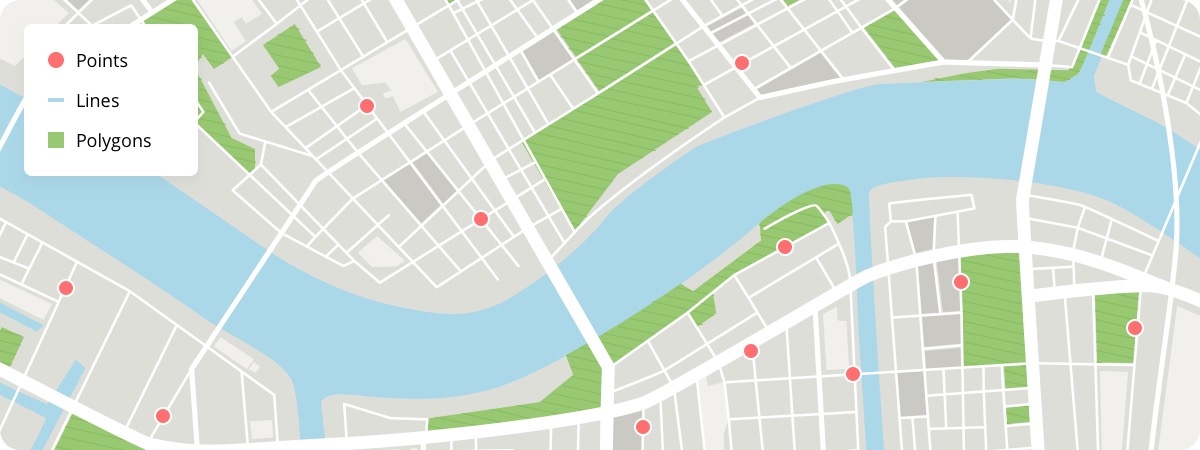
Source: Carto
Common Vector Data Types:
More than 80 different vector file types available across software and systems!
- NetCDF
- Shapefile
- GeoJSON
- Esri Geodatabase Feature Class
- KML
Raster Data
Represents space as a grid of pixels
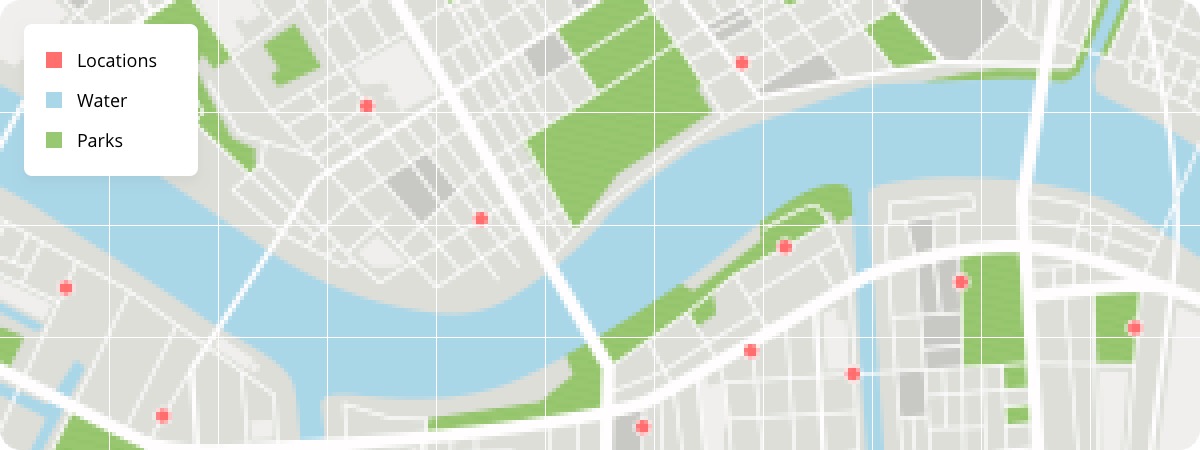
Source: Carto
Common Raster Data Types:
- Imagine IMG
- GeoTIFF & Cloud Optimized GeoTIFF
- netCDF raster version
- CRF (Cloud raster format)
- BAG (Bathymetric Attributed Grid)
Data Type Considerations
Raster is faster, but vector seems more correcter
- Spatial data files do their best to represent the world
- Accuracy needs will depend on each use case
- Mapping an entire state vs. a single forest stand
- Each sensor and GPS receiver will vary
Raster Advantages:
- Continuous Representation: Raster data models are well-suited for representing continuous phenomena, such as elevation, temperature, and precipitation.
- Efficient Storage: Raster datasets can be more compactly stored than vector datasets, especially for large continuous areas.
- Analytical Capabilities: Raster data supports various spatial analysis techniques, such as surface analysis, proximity analysis, and interpolation, enabling detailed quantitative analysis
Raster Disadvantages:
- Loss of Detail: Raster datasets may lose detail when representing complex geometries or sharp boundaries, leading to generalization or smoothing of features.
- Large File Sizes: High-resolution raster datasets can result in large file sizes, which may require significant storage space and computing resources.
- Limited Attribute Information: Raster data typically stores attribute information at the pixel level, which may limit the types of attribute analysis that can be performed
Vector Advantages:
- Precise Representation: Vector data models accurately represent discrete features with well-defined boundaries, making them suitable for representing infrastructure, boundaries, and administrative units.
- Compact Storage: Vector datasets can efficiently store attribute information associated with spatial features, enabling detailed attribute analysis and queries.
- Topology Support: Vector data models support topological relationships between features, such as connectivity and adjacency, which facilitate spatial analysis and data integrity checks.
- Flexible Editing: Vector data can be easily edited and updated, allowing for precise modifications to individual features or attributes without affecting neighboring features.
Vector Disadvantages:
- Complex Geometries: Vector data may struggle to represent continuous phenomena or complex geometries accurately, leading to oversimplification or data loss.
- Increased Storage Requirements: Vector datasets can require more storage space compared to raster datasets, especially for datasets with complex geometries or extensive attribute information.
A Note on Shapefiles
Stop Using Shapefiles: http://switchfromshapefile.org/
While shapefiles are common and widely supported, there are several downsides:
- Multi-file format causes sharing issues
- Attribute (column) names limited to 10 characters
- No more than 255 total attributes
- Total size limit of 2 GB
Alternatives for the SHP
- OGC GeoPackage
- GeoJSON
- OGC GML
- OGC KML
- Esri GeoDatabase
Coordinate Reference Systems
- Abbreviated as CRS or GRS or PRS
- GRS = geographic (unprojected)
- PRS = projected
- Often the most confusing part of introductory GIS
- Layers need to have same CRS for spatial operations
- Units are different for each!
Geographic CRS
Representing a 3D sphere as a 3D model
- Geographic coordinate reference systems identify any location on the Earth’s surface using two values — longitude and latitude
- Longitude = angular distance East-West from the Prime Meridian plane
- Latitude = angular distance North or South of the equatorial plane
- Units are in degrees
Projections CRS
Learn more: https://www.geo-projections.com/
Representing a 3D sphere on a 2D surface
- No perfect projection exists (prioritize for needs)
- Different regions and states have their own projections
- Many software have on-the-fly projection
Projections CRS
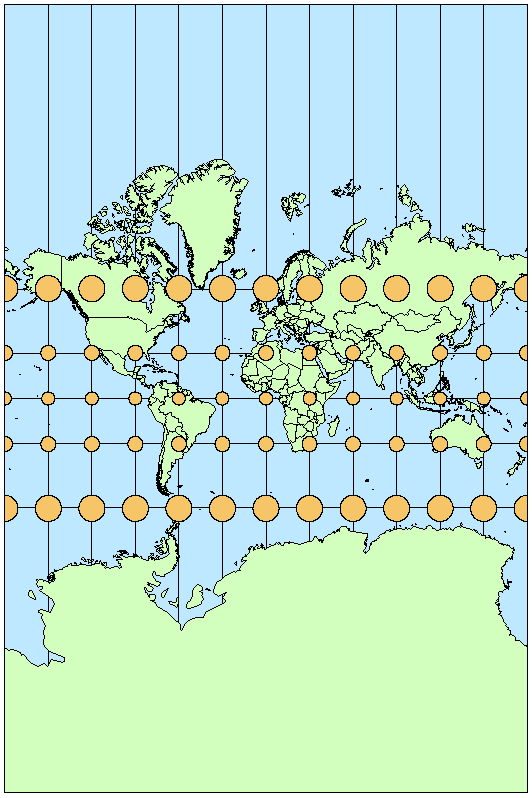
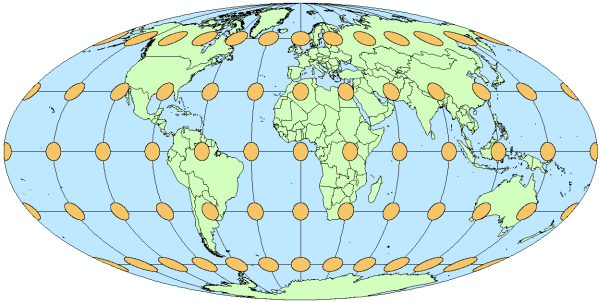
CRS Nomenclature
See more here: https://epsg.io/.
Coordinate reference systems have various names or ways of referring to them in GIS software.
This is especially prominent in programmatic GIS where a GUI dropdown menu of projections is not an option.
- English Name
- WKT ~ Well Known Text
- EPSG
- PROJ.4
CRS Nomenclature
See more here: https://epsg.io/.
English Name
EPSG
PROJ.4
CRS Nomenclature
See more here: https://epsg.io/.
WKT ~ Well Known Text
CRS Nomenclature
See more here: https://epsg.io/.
WKID ~ Well Known Identifier (ESRI)
Software & Programs
Proprietary
- ArcGIS Pro
- Cadcorp
- MAPublisher
- Carto
Open-Source*
- QGIS
- GRASS GIS
- GeoDa
- R / Python / Julia
*Many open-source software have paid tiers for extending functionality or rely on paid services for sharing
Web Geospatial Tools
- ArcGIS Online
- Google Earth Engine
- Leaflet
- Mapbox
- Mango Map
- Felt
Field Collection
GPS Recievers
GPS receivers, or Global Positioning System receivers, are electronic devices that use signals from satellites to determine the receiver’s location on Earth.
GPS receivers range in both price and accuracy.
- Recreational Grade
- Mapping Grade
- Survey Grade
Field Collection
Recreational Grade
Recreational grade GPS receivers are sold at most box stores and at many sporting goods and camping stores. They are also available widely through Internet retailers. These units are the least expensive grade and are generally accurate to within +/- 25 feet (7.6 meters). These receivers run in the $100 to $600 range and are the type most often purchased by the general public.
Field Collection
Mapping Grade
Mapping grade GPS receivers are generally sold by “high end” and licensed resellers. These GPS receivers are typically less user-friendly than the recreational GPS, and they cost significantly more. Mapping grade GPS are more accurate than recreational units, commonly to within a meter (~3 feet).
Field Collection
Survey Grade
Survey grade GPS receivers are the most accurate and the most expensive. They are accurate to within a centimeter and can cost in the tens of thousands of dollars.
Apps for Field Collection
Many apps available for field data collection.
Esri Field Maps (for Esri)
- Integrates with ArcGIS Online and ArcGIS Pro
- Both Android and iOS support
QField or Mergin Maps (for QGIS)
- Integrates with QGIS Cloud environment
Apps for Field Collection
Many apps available for field data collection.
Avenza Maps (for anything)
- Works with multiple programs
Can be used with external GPS receivers (Bad Elf, Garmin GLO), else uses the internal GPS chip.
Spatial Operations
Spatial operations in GIS refer to a set of analytical techniques and functions used to manipulate, analyze, and derive new spatial information from existing geographic datasets.
These operations involve the manipulation of spatial data to answer specific questions, identify patterns, and support decision-making processes.
Spatial Operations
Tobler’s First Law of Geography, often summarized as “Everything is related to everything else, but near things are more related than distant things,” has profound implications for spatial analysis and GIS operations.
Many GIS operations and spatial analysis techniques are inherently based on Tobler’s First Law of Geography, as they leverage proximity and spatial relationships to derive meaningful insights and make informed decisions.
Common Spatial Operations
There are a various types or groups of spatial operations.
- Extraction
- Overlay
- Proximity
- Others
Extraction
Clip
This operation involves extracting a portion of one layer based on the extent of another layer. It retains only those features from the input layer that fall within the spatial extent of the clip layer.
Select
Selecting features involves choosing specific geographic features from a layer based on certain criteria, such as attribute values or spatial relationships.
Extraction
Split
Splitting divides one or more input features into separate features based on a specified line or polygon boundary.
Split By Attributes
This operation divides features based on attribute values. It creates separate output datasets for each unique attribute value.
Overlay
Erase
Erase removes portions of one layer that overlap with another layer, leaving only the areas where the two layers do not overlap.

Overlay
Identity
Identity produces a new layer that preserves the geometries of both input layers. It assigns attributes from both layers to the output, and where they overlap, it retains the attributes of both layers.

Overlay
Intersect
Intersect creates a new layer that contains only the areas where features from input layers overlap. The output retains the attributes from both input layers.

Overlay
Spatial Join
Spatial Join combines attributes from two layers based on their spatial relationship. It creates a new layer with attributes from both input layers, using a specified spatial relationship (e.g., intersect, contain, within).
Overlay
Union
Union combines the geometries and attributes of two or more input layers to create a new layer that represents the geometric and attribute combination of all input layers.

Overlay
Update
Update operation involves modifying attributes or geometries of features in a layer based on the attributes or geometries of another layer.

Proximity
Near
Near identifies features in one layer that are closest to features in another layer. It calculates distances between features and reports the nearest feature(s) based on specified criteria.
Proximity
Buffer
Buffering is a spatial operation in GIS that involves creating a zone or area around a geographic feature, typically represented as a point, line, or polygon. This zone is defined by a specified distance or buffer radius.

Other
Dissolve
Dissolve combines adjacent polygons or features that share a common attribute value into a single feature. It merges geometries and aggregates attributes based on the specified dissolve field.
Summarize Within
Summarize Within is a spatial operation in GIS that involves aggregating data from one layer based on the spatial relationship with features from another layer. It calculates statistics or aggregates attributes of features within the boundaries of other features.
Break Time!
5-10 Minutes | See instructors with lingering questions.
ArcGIS Pro
Introduction to ArcGIS Pro interface and capabilities.
Break Time!
5-10 Minutes | See instructors with lingering questions.
Programmatic GIS
Basics of scripting in ArcGIS Pro using Jupyter.
What is programmatic GIS?
Programmatic GIS refers to the practice of using programming languages and scripts to:
- perform geospatial analysis,
- automate GIS tasks, and
- develop custom geospatial applications.
What is programmatic GIS?
Rather than relying solely on graphical user interfaces (GUIs) of GIS software, programmatic GIS empowers users to harness the full capabilities of GIS through code.
While the GUI is a vital part of GIS and creates a venue for speedy learning, it can be very slow (esp. in ArcGIS Pro) and does not make sense for large scope projects or repetitive tasks.
Why use scripting for GIS?
- Allows for reproducible science and workflows
- Supplementary material for manuscripts
- Turns repetitive tasks into simple tools
- Some tools are only available in the coding interface
- Integrates with other tools and methods
- Modules, extensions, APIs
- Data wrangling and visualization
What is Python?
Python is a versatile and powerful programming language widely used in various fields, including web development, data science, artificial intelligence, and, importantly, GIS.
- While R is widely used across academia, many private industries use Python as the standard language for programmatic GIS.
- Python is the primary coding language used in ArcGIS Pro, along with Arcade (Esri’s proprietary language).
What is Jupyter?
Jupyter Notebooks are interactive computing environments that allow you to combine live code, equations, visualizations, and narrative text all in one document.
They support multiple programming languages, including Python, R, and Julia, making them versatile tools for various data analysis tasks.
What is Jupyter?
Jupyter Notebooks is installed as part of the ArcGIS Pro installation process or added later using the ArcGIS Pro package manager.
Once installed, you can launch Jupyter Notebooks directly from the ArcGIS Pro interface or a Python command prompt.
What is Jupyter?
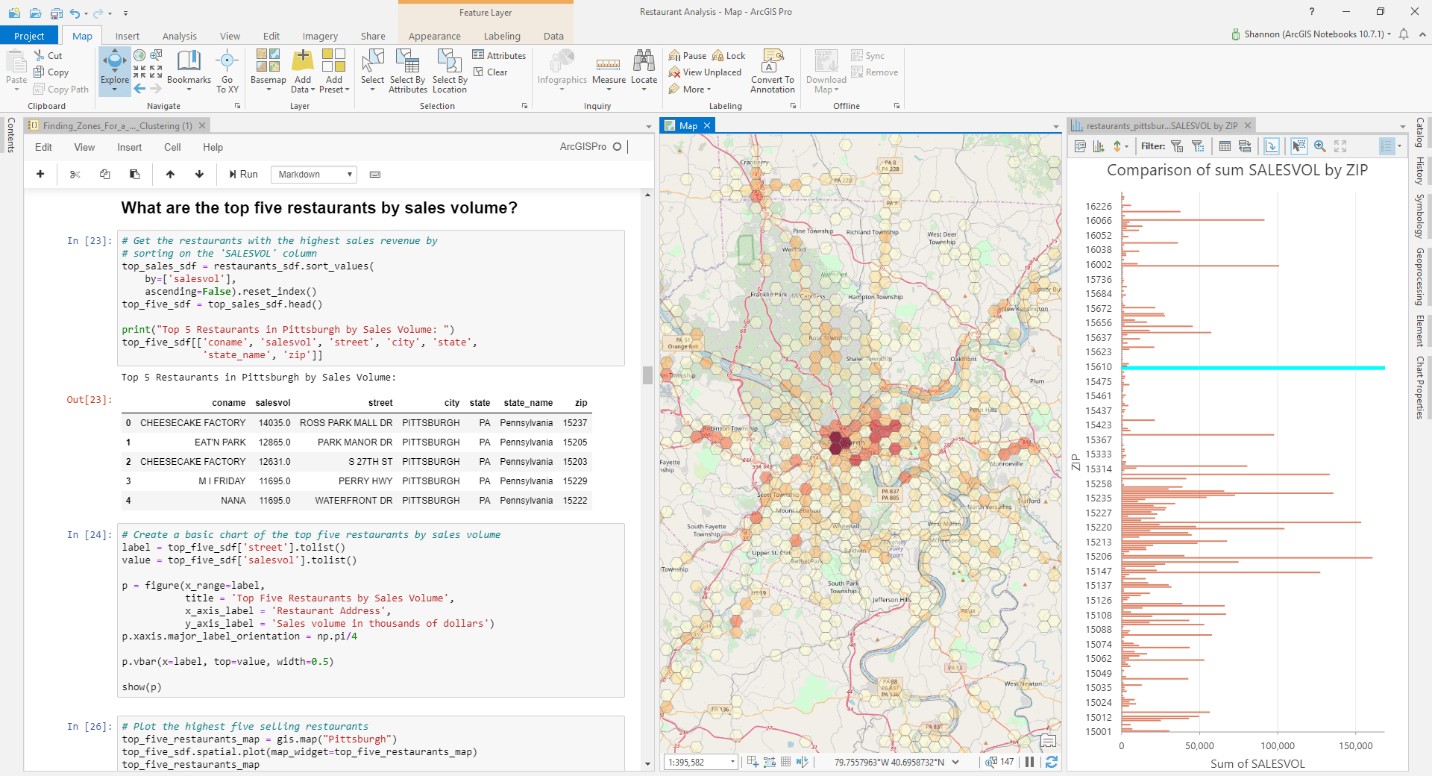
Python in ArcGIS Pro
arcpy is the main python module to interact with the ArcGIS ecosystem and will be the focus of our exploration today.
Best Practices
- Writing Efficient and Readable
arcpyScripts:
- Use meaningful variable names and comments to enhance code readability.
- Break down complex tasks into smaller, modular functions.
- Optimize
arcpyscripts by minimizing unnecessary loops and operations.
Best Practices
- Documenting Code and Workflows:
- Document arcpy scripts with clear and concise comments explaining the purpose of each section and important steps.
- Maintain separate documentation files or READMEs detailing script usage, input/output data, and dependencies.
Best Practices
- Version Control and Collaboration:
- Use version control systems (e.g., Git) to track changes and collaborate with team members on
arcpyprojects. - Establish coding standards and conventions for consistent
arcpyscript development within the team.
Hands-on Exercise
Now we will explore how to open, run, and output Python code in ArcGIS Pro!
Break Time!
5-10 Minutes | See instructors with lingering questions.
Spatial Data in R
Basic introduction to handling spatial data in R/RStudio.
See webpage for R content!
Questions?
You made it to the end! Great job!
Contact & Resources
Reach out with inquiries:
Benjamin Tjepkes ~ bwtbgm@missouri.edu
Wesley Fitzsimmons ~ waf8xt@missouri.edu
Workshop Resources:

© The Authors | 2024.03.19